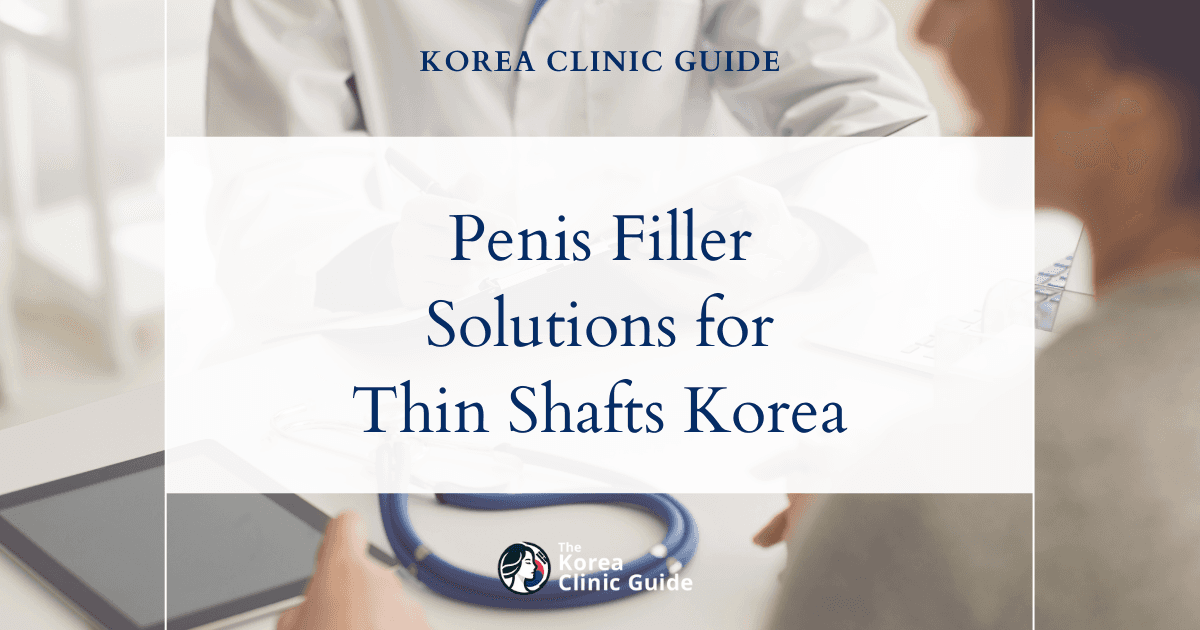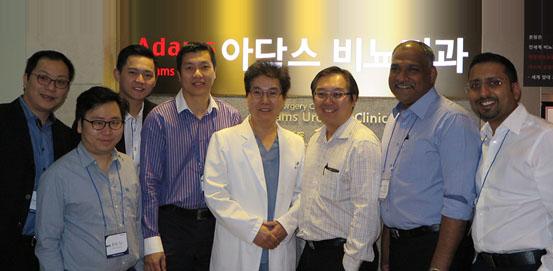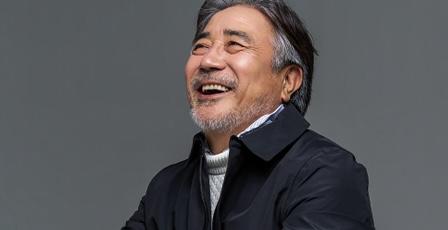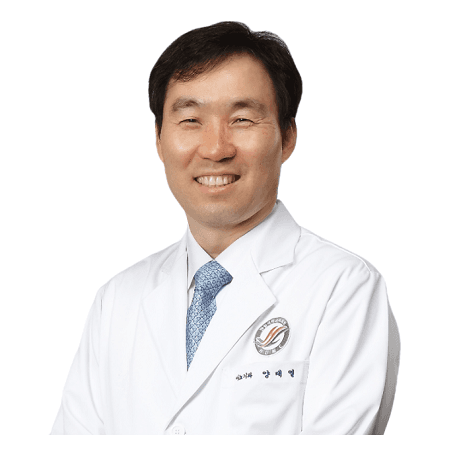Medical Tourism Blog
Eretile Dysfunction in Korea | Best Clinics, Costs, Procedure Types & More

Table of contents
- What Is Erectile Dysfunction?
- Who Can Benefit from Erectile Dysfunction Treatment?
- Best Clinics in Korea
- Getting Erectile Dysfunction Treatment in Korea
- Alternatives to Erectile Dysfunction
- Conclusion
Amidst the bustling advancements in medical treatments worldwide, have you ever wondered how cultural contexts shape the understanding and management of conditions like erectile dysfunction (ED)? In Korea, breaking the silence around this often-stigmatized issue is paramount as modern clinics offer pioneering solutions tailored to those in need.

What Is Erectile Dysfunction?
Erectile Dysfunction (ED) is a prevalent medical condition characterized by the inability to achieve or maintain an erection sufficient for satisfactory sexual performance. This condition, also known as impotence, can affect men of all ages but is more common in older adults. ED can have a profound impact on a man's quality of life and emotional well-being, as well as on his relationship with his partner.

Causes of Erectile Dysfunction
ED can result from various physical and psychological factors. Physical causes include:
- Cardiovascular diseases: Conditions such as atherosclerosis (hardening of the arteries), high blood pressure, and high cholesterol can reduce blood flow to the penis.
- Diabetes: This can cause damage to nerves and blood vessels that are critical for erectile function.
- Neurological disorders: Conditions like Parkinson's disease, multiple sclerosis, and spinal cord injuries can disrupt the signals between the brain and the penis.
- Hormonal imbalances: Low levels of testosterone or other hormonal irregularities can contribute to ED.
- Medication side effects: Certain medications, including those for high blood pressure, depression, and anxiety, can cause ED as a side effect.
- Surgery or injury: Medical procedures or physical trauma, particularly those involving the pelvic area or spinal cord, can lead to ED.
Psychological causes include:
- Stress and anxiety: Both general stress and performance anxiety can affect erectile function.
- Depression: Mental health disorders can decrease libido and contribute to ED.
- Relationship issues: Problems with significant others can lead to sexual dysfunction.
Diagnosis of Erectile Dysfunction
To diagnose ED, healthcare providers typically perform a comprehensive medical evaluation that may include:
- Medical History: Discussing symptoms, health conditions, and medication usage.
- Physical Examination: Including an examination of the genitals and assessment of blood pressure.
- Blood Tests: To check for conditions like diabetes, heart disease, and low testosterone levels.
- Urinalysis: To look for signs of diabetes and other underlying health conditions.
- Ultrasound: To assess blood flow to the penis.
- Psychological Evaluation: To determine if depression, anxiety, or other psychological conditions contribute to ED.
Treatment Options for Erectile Dysfunction
Treatment for ED is tailored to the underlying cause and the patient's needs. Common treatments include:
- Oral Medications: Phosphodiesterase type 5 inhibitors (e.g., sildenafil, tadalafil) enhance the effects of nitric oxide, a natural chemical the body produces to relax muscles in the penis and increase blood flow.
- Lifestyle Changes: Improving diet, exercising regularly, quitting smoking, and reducing alcohol intake can help manage ED.
- Counseling and Therapy: For those with psychological causes, therapy can be beneficial.
- Vacuum Erection Devices: Mechanical pumps that create an erection by drawing blood into the penis.
- Penile Injections and Suppositories: Medications injected directly into the penis or inserted into the urethra.
- Hormone Replacement Therapy: For men with low testosterone levels, hormone replacement can improve symptoms.
- Surgical Options: In severe cases, implants or vascular surgery may be considered.
Understanding the multifaceted nature of ED is crucial for effective treatment and management. In Korea, as in other parts of the world, addressing this condition involves a combination of medical intervention, lifestyle modification, and psychological support.
Who Can Benefit from Erectile Dysfunction Treatment?
-
Men between the ages of 40 and 70:
- Over half of men in this age range experience some form of erectile dysfunction (ED).
-
Men experiencing psychological issues:
- Conditions like depression, anxiety, stress, and relationship problems can interfere with sexual arousal, contributing to ED.
-
Men with physical health conditions:
- Various health issues such as heart disease, high cholesterol, high blood pressure, diabetes, obesity, and smoking can lead to ED.
-
Older men:
- As men age, erections take longer to develop, and the risk of contributing factors increases.
-
Men undergoing lifestyle changes:
- Those who are considering or are in the process of healthier lifestyle changes such as diet, exercise, and quitting smoking might see improvements in their ED.
-
Men with certain medical histories:
- A physical exam and a detailed medical history can often diagnose ED, making men with chronic health issues good candidates for further investigation.
-
Men dealing with self-confidence issues:
- Ongoing issues with ED can affect self-confidence and stress levels, making treatment essential to improve overall well-being.
-
Couples:
- Couples dealing with relationship problems caused by ED can benefit from psychological or sexual therapy, often recommended by doctors.
-
Men needing specialized treatments:
- Men who do not respond to oral medications and need alternative treatments such as vacuum penis pumps or penile implants.
Best Clinics in Korea
Listed below are the best clinics in Korea:
| Clinic Name | Key Features | Special Techniques |
|---|---|---|
| Stantop Urology & Andrology | Recognized by KBS, trusted by over 100,000 patients with 40,000+ successful surgeries; separate consultation and treatment rooms for men and women; personalized care and VIP services; leader in urological and andrological health domestically and internationally | Inflatable and malleable penile implants, stem cell therapy, shockwave therapy |
| SH Clinic | Specialized male urology services for erectile dysfunction, prostate health, and incontinence; couple’s therapy and sexual health treatments; personalized treatment plans; state-of-the-art diagnostic and therapeutic technologies; holistic care integrating physical and emotional support; convenient Sinsa location | Advanced treatments for erectile dysfunction, couple’s therapy, comprehensive sexual health care |
| Proud Urology Clinic | JCI-accredited facility; expert team in men’s health and erectile dysfunction surgeries; comprehensive treatment options; holistic approach addressing related conditions; additional STD/STI testing and HPV vaccination; commitment to confidentiality and patient comfort; proven successful outcomes | Penile implants, behavioral therapy, penis enlargement, penile curvature correction, vasectomy reversal, scrotal reconstruction |
Stantop Urology & Andrology
StanTop Urology & Andrology Clinic stands out as the premier choice for erectile dysfunction treatment in Korea due to its comprehensive, advanced, and patient-centered approach. Recognized by KBS and trusted by over 100,000 patients with more than 40,000 successful surgeries, the clinic offers cutting-edge therapies such as inflatable and malleable penile implants, stem cell therapy, and shockwave therapy to effectively restore erectile function. Their specialized facilities provide separate consultation and treatment rooms for men and women, ensuring privacy and comfort throughout the treatment process. Additionally, StanTop’s personalized care and VIP services tailor treatment plans to individual needs, making it a leader in urological and andrological health both domestically and internationally. This combination of expertise, innovative treatments, and patient-focused care makes StanTop Urology & Andrology Clinic the best destination for erectile dysfunction treatment in Korea.
You can check out their website here: Stantop Urology & Andrology Website
SH Clinic
SH Clinic in Sinsa is a premier medical facility in Korea renowned for its comprehensive and specialized healthcare services, including advanced treatments for erectile dysfunction. With a dedicated male urology department, SH Clinic offers expert care focused on prostate health, erectile dysfunction, and urinary incontinence, making it a trusted destination for men seeking effective solutions. The clinic also provides couple’s therapy and sexual health treatments aimed at enhancing intimacy and overall well-being for midlife couples. Combining personalized care with cutting-edge medical technology, SH Clinic stands out as the best choice for erectile dysfunction treatment in Korea.
Why SH Clinic is the Best Choice for Erectile Dysfunction Treatment in Korea:
- Specialized male urology services addressing erectile dysfunction, prostate health, and incontinence.
- Comprehensive approach including couple’s therapy to improve sexual satisfaction and relationship health.
- Personalized treatment plans tailored to each patient’s unique medical needs.
- Use of state-of-the-art diagnostic and therapeutic technologies.
- Experienced medical professionals with expertise in sexual health and urology.
- Holistic care that integrates physical treatment with emotional and relational support.
- Convenient location in Sinsa, providing easy access for patients across Korea.
You can check out their website here: SH Clinic Website
Proud Urology Clinic
Proud Urology Clinic, established in 2016, stands out as a premier destination for men seeking specialized care for erectile dysfunction and other men’s health concerns in Korea. With JCI accreditation and a team of professionally trained staff, the clinic offers a comprehensive range of advanced men enhancement procedures, ensuring personalized treatment plans tailored to each patient’s needs. Proud Urology Clinic combines cutting-edge surgical techniques with compassionate care, making it the best choice for those looking to improve their sexual health and overall confidence.
Why Proud Urology Clinic is the best for erectile dysfunction treatment in Korea:
- JCI-accredited facility ensuring the highest standards of medical care and patient safety
- Expert team specialized in men’s health and erectile dysfunction surgeries
- Comprehensive treatment options including penile implants, behavioral therapy, and medical interventions
- Advanced surgical techniques such as penis enlargement, penile curvature correction, and vasectomy reversal
- Holistic approach addressing related conditions like premature ejaculation and scrotal reconstruction
- Additional services including STD/STI testing and HPV vaccination for overall sexual health maintenance
- Commitment to patient confidentiality, comfort, and long-term well-being
- Proven track record of successful outcomes and improved patient satisfaction
Find more about this clinic here: Proud Urology Clinic Website
Getting Erectile Dysfunction Treatment in Korea
Erectile dysfunction (ED) is a common medical condition affecting men worldwide, and Korea offers a range of advanced treatments for those suffering from this condition. Let's dive into the detailed medical procedures available for erectile dysfunction in Korea.
Diagnosis and Initial Consultation
The journey towards treating erectile dysfunction in Korea typically begins with a thorough diagnosis. Patients undergo an initial consultation where a urologist or a specialized healthcare provider takes a detailed medical history. This includes discussing the patient's symptoms, lifestyle factors, and any existing medical conditions. The consultation may also cover psychological factors that could be contributing to the condition, such as stress or anxiety.
Physical Examination
Following the initial consultation, a physical examination is conducted to assess the patient's overall health. The healthcare provider checks the genital area for any anatomical abnormalities that might be causing erectile dysfunction. Blood pressure, heart rate, and other vital signs are also monitored to rule out hypertension or cardiovascular issues that could impair erectile function.
Laboratory Tests
Laboratory tests are essential to identify underlying medical conditions that might contribute to ED. Common tests include:
- Blood Tests: To check for diabetes, hormonal imbalances (such as low testosterone levels), and lipid profiles.
- Urinalysis: To detect any kidney issues or urinary tract infections.
- Nocturnal Penile Tumescence (NPT) Test: This test monitors erections that occur during sleep to determine if the cause is psychological or physiological.
Advanced Diagnostic Procedures
Depending on the initial findings, more advanced diagnostic procedures may be warranted. These can include:
- Duplex Ultrasound: An imaging test that evaluates blood flow, venous leak, and scarring or calcification in the penile tissues.
- Penile Biothesiometry: A test to measure the sensitivity and nerve function in the penis.
- Dynamic Infusion Cavernosometry and Cavernosography (DICC): An invasive test to measure the vascular pressure in the penis, helping to diagnose vascular issues.
Treatment Options
Korea is renowned for its advanced medical technologies and offers a variety of treatment options for erectile dysfunction:
Pharmacotherapy
The first line of treatment often involves medication. Common drugs used include:
- PDE-5 Inhibitors: Such as Sildenafil (Viagra), Tadalafil (Cialis), and Vardenafil (Levitra). These medications improve blood flow to the penis.
- Hormonal Treatments: If hormonal imbalances are detected, testosterone replacement therapy may be recommended.
Injection Therapy
For patients unresponsive to oral medications, injection therapy is a viable option. This involves injecting medication directly into the penile tissue to induce an erection. Commonly used drugs include alprostadil, papaverine, and phentolamine.
Vacuum Erection Devices (VEDs)
Vacuum erection devices are non-invasive treatments that involve placing a cylindrical device over the penis to create a vacuum. This encourages blood flow into the penis, resulting in an erection. A constriction ring is then applied to maintain the erection.
Penile Implants
Penile implants are considered when other treatments fail. There are two main types:
- Inflatable Implants: These consist of two inflatable cylinders placed inside the penis, a pump placed in the scrotum, and a reservoir of fluid placed in the abdomen.
- Malleable Rods: Semi-rigid rods implanted inside the penis, allowing for a permanently firm penis that can be positioned as needed.
Low-Intensity Extracorporeal Shockwave Therapy (Li-ESWT)
This advanced treatment involves the use of low-intensity shockwaves to improve blood flow and stimulate the growth of new blood vessels in penile tissues. It's a non-invasive and painless procedure that has shown promising results.
Follow-up and Lifestyle Changes
Post-treatment, follow-up appointments are critical for assessing the effectiveness of the treatment and making necessary adjustments. Healthcare providers often recommend lifestyle changes such as quitting smoking, reducing alcohol intake, losing weight, and incorporating regular exercise to enhance treatment outcomes.
By leveraging advanced diagnostic tools and a comprehensive range of treatment options, Korea offers effective solutions for men seeking relief from erectile dysfunction.
Alternatives to Erectile Dysfunction
When addressing erectile dysfunction (ED), commonly known as impotence, it's important to consider various alternatives and treatments. Here are three suitable alternatives to manage and treat ED effectively:
1. Pharmaceuticals
Oral prescription medications are a popular method for treating erectile dysfunction. These include sildenafil (Viagra), vardenafil (Levitra), tadalafil (Cialis), and avanafil (Stendra). These drugs help increase blood flow to the penis by amplifying the effects of nitric oxide, a chemical that the body naturally produces to relax muscles in the penis. Sexual stimulation releases this chemical, and these medications enhance its effect, allowing for an erection.
How It Works:
- Does not produce an erection automatically; sexual stimulation is required.
- Tablets enhance the effect of nitric oxide, allowing normal blood flow and penile function.
- Dosage, duration, and side effects vary among different medications.
Considerations:
- These medications may have side effects such as flushing, headache, nasal congestion, visual changes, backache, and stomach upset.
- They might be less effective for certain conditions, such as after prostate surgery or for individuals with diabetes.
- It is essential to consult a doctor before starting any medication, including over-the-counter supplements and herbal remedies.
2. Vacuum Penis Pumps
If medications aren't effective or appropriate, a vacuum penis pump can be a viable alternative. This device uses a hollow tube and a hand-powered or battery-powered pump to create a vacuum that pulls blood into the penis.
How It Works:
- The tube is placed over the penis, and the pump is used to draw air out, creating a vacuum.
- This vacuum induces blood flow into the penis, causing an erection.
- A rubber ring is then placed around the base of the penis to maintain the erection.
Considerations:
- The erection typically lasts long enough for sexual intercourse.
- Side effects can include bruising and restricted ejaculation.
- It is crucial to use a model recommended or prescribed by a doctor to ensure safety and efficacy.
3. Penile Implants
Penile implants are an option when other methods are not effective. This involves surgically placing devices into both sides of the penis. Implants can be either inflatable or malleable rods.
How It Works:
- Inflatable implants allow the user to control when and how long they have an erection.
- Malleable (bendable) rods maintain a firm but flexible state for the penis.
- These implants provide a high degree of satisfaction for individuals who did not respond to other treatments.
Considerations:
- Surgery carries risks such as infection.
- Penile implant surgery is not advised if there is a current urinary tract infection.
- As a more invasive option, implants are usually considered after other therapies have been tried.
These alternatives provide a range of solutions depending on individual conditions and preferences. Consulting a healthcare professional can help determine the most appropriate treatment based on the underlying cause and severity of erectile dysfunction.
| Procedure Price | Korean Won (₩) | USD ($) |
|---|---|---|
| Low Price | ₩10,000,000 | $7300 |
| High Price | ₩33,000,000 | $24000 |
Exchange rate as of 2025-05-22: 1 KRW = 0.0007 USD
Please note that these prices are approximate guidelines and can vary significantly based on the clinic and your individual circumstances.
Conclusion
In conclusion, erectile dysfunction in Korea is a multifaceted health issue influenced by various factors, including cultural attitudes, lifestyle choices, and access to medical care. While traditional stigmas around discussing sexual health still pose challenges, growing awareness and the integration of advanced medical treatments have begun to alleviate some of these barriers. Policymakers, healthcare providers, and the community at large must continue to foster open dialogues and provide comprehensive support systems. Through such collaborative efforts, we can improve the quality of life for those affected by erectile dysfunction and ensure they receive the necessary care and understanding in a rapidly evolving societal landscape.
















